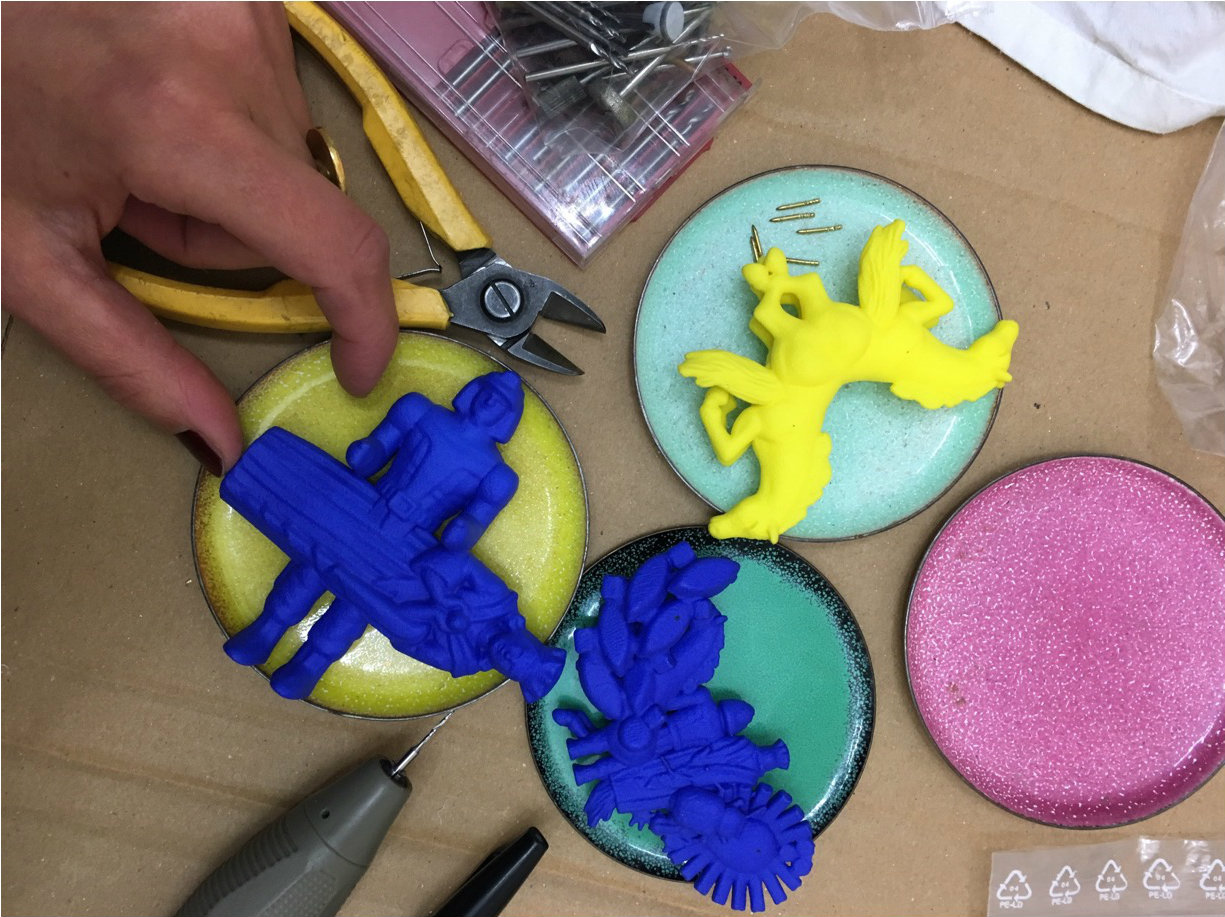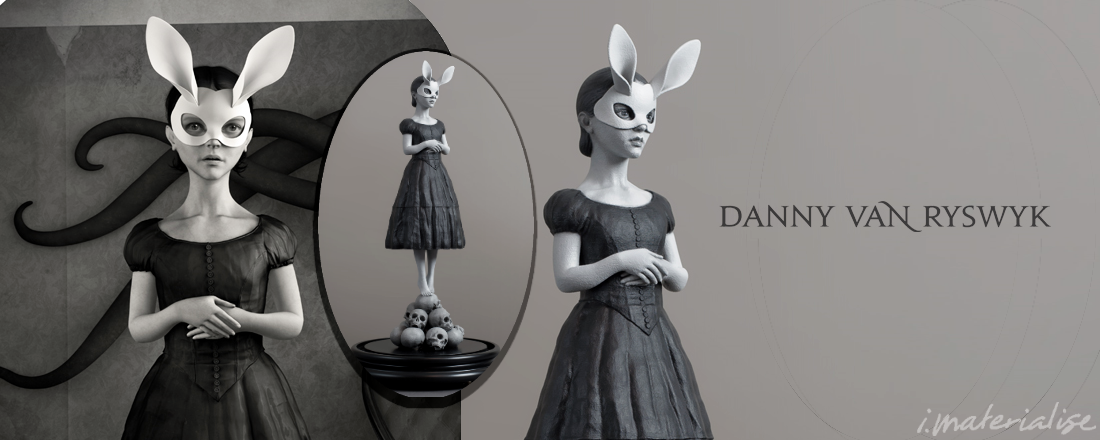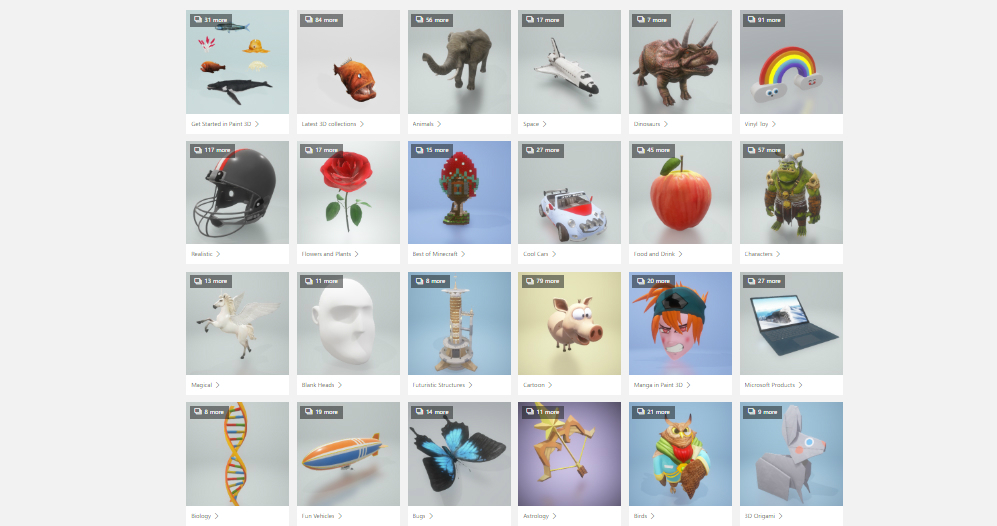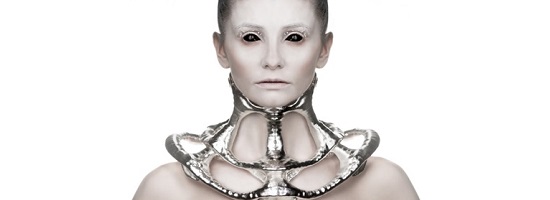
3D Printed Necklace Fit for Any Earthling or Alien
The two things you can never reproach fashion designer Laura Thapthimkuna for: simple-mindedness and tedium. This young designer melds fashion, art and science into objects that are not only utterly stunning but also provocative and scary. Now Laura presents her first terrific experiments with 3D printing.
Hello Laura, tell us a bit about yourself.
I am a fashion designer who concentrates on avant-garde and conceptual design. I am currently exploring the possibilities of 3D printing in my work. I also have a ready-to-wear line as well.
What do you do in your everyday life?
I spend a lot of time in my studio working and researching on my designs. In my downtime I find myself scanning science blogs and looking for new materials to use. I also have a day job as an engineer. I have found that drafting/drawing on the computer has helped me when trying to convey an idea to someone else, especially when working with 3D designers.
Check out two of Laura’s designs before she started working on her 3D printed projects:
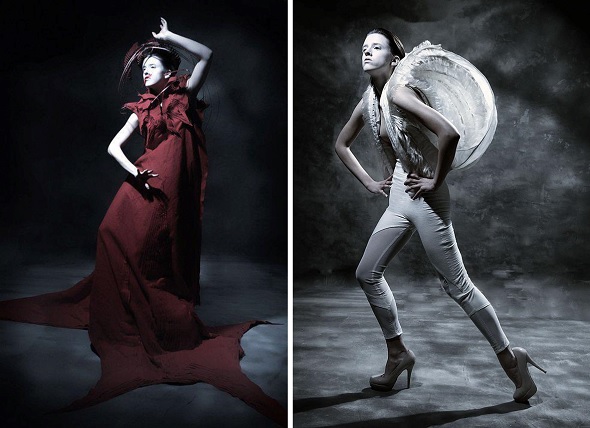
Topography Dress (left) and Morphology Collection (right) by Laura Thapthimkuna. Photos by Nestor Levias, Michael Canavan, Escalante, Patrick Lewtschanyn
What have you been working on lately?
I am working on a collection of 3D printed designs. I have been collaborating with architects, video game designers and 3D artists.
Where do you get your inspiration from?
In the past I have found inspiration in medical procedures and biology. For the neckpiece I was inspired by tracheal intubation, which is the insertion of a plastic tube into the throat in order to provide an open airway through the trachea. I wanted to create something that looks like an instrument meant to constrict and give life to someone at the same time, but also has a futuristic and alien-like feel to it.
I’m currently finding inspiration in theories involving the universe like black holes, different dimensions and alien life. I am exploring those concepts in my current pieces.
Take a look at Laura’s 3D printed neckpiece:
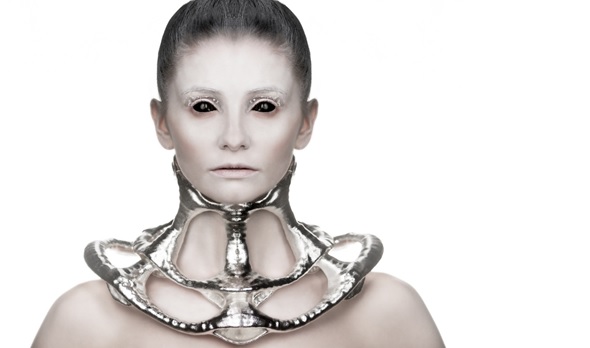
3D printed neckpiece by Laura Thapthimkuna.
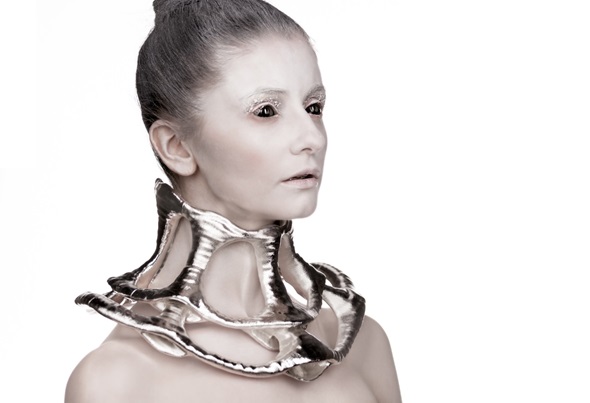
3D printed neckpiece by Laura Thapthimkuna.

3D printed neckpiece by Laura Thapthimkuna.
Can you describe your style in just a few words?
If I had to describe my style in a few words it would be exploratory, experimental and sculptural.
When did you start using 3D printing technology and which 3D design software do you use most?
I started using 3D printing technology recently. I do not directly work with 3D design software, but the people I collaborate with used Maya and ZBrush.
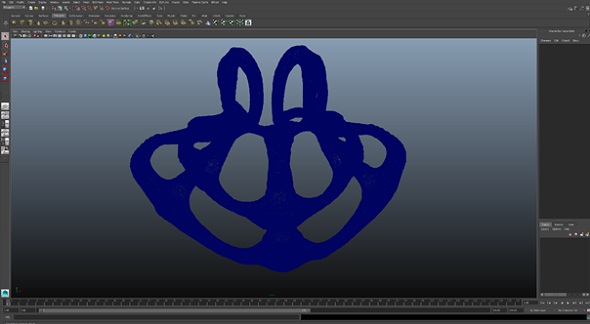
Laura’s 3D model of the neckpiece in Maya.
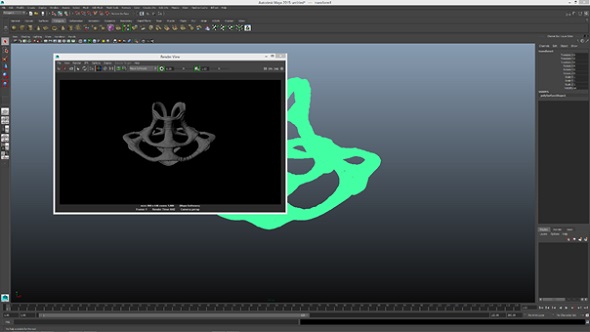
Laura’s 3D model of the neckpiece in Maya.
Which materials are your favorite to 3D print in, and why?
The neckpiece is the first design I have fully 3D printed; it was printed in Mammoth Resin and finished in a chrome-look. The resin is nice because it is so lightweight but still has a rigid and strong quality. I plan on experimenting with many more materials in the future.
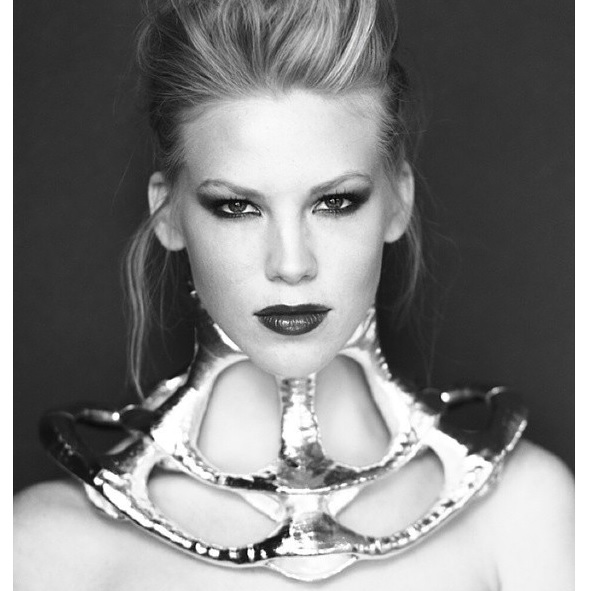
3D printed neckpiece by Laura Thapthimkuna.
Please describe your workflow a little.
I normally imagine the design in my mind and start sculpting materials directly on the mannequin. I enjoy the process because I never know if a design is going to come out looking exactly how I had envisioned it in my head or if it’s going to look entirely different. A design can change a lot once things like gravity and scale are involved, I like how I am able to discover something new through the process of making.
When I collaborate with other people on a 3D printed design, it’s a different process – I am forced to get out my own head and put my design down on paper, which is similar to when I collaborate with musicians and performers. Though the interesting thing about working with other designers is that it can get very interesting at times to translate a three-dimensional idea into a 2D sketch in order to get the idea across to someone else who must then design back in 3D. I have found it to be very rewarding though because I am able to create certain shapes and textures that wouldn’t be possible in the traditional manner of making [things] with my own hands.
Director: Patrick Lewtschanyn, Loose Cannon Films
The design and video effects rather have a dark and dangerous tone. What do you want to provoke with this?
I wanted to provoke a sense of an extension to the body through an alien-like modification with biomorphic elements. For the video interpretation of the piece I was inspired by scenes from Jonathan Glazer film “Under the Skin” and the art work of H.R Giger. The feeling of something other worldly mixed with a sci-fi horror film approach really fit with the piece and my inspiration behind it.
What projects can we expect from you in the future?
I’m currently working on new designs that incorporate emotion sensory technology and skin-like materials. The idea of creating garments that appear to be breathing and moving is something I want to explore in the future.
More and more jewelry designers are discovering the great potential and design freedom that 3D printing offers. i.materialise and Materialise enable designers from all over the world to order 3D prints to enhance their new fashion collections. Visit Laura’s website to learn more about her work, or read our latest blog posts about Melina Looi’s Ocean Collection and Anouk Wipprecht’s Spider Dress.


